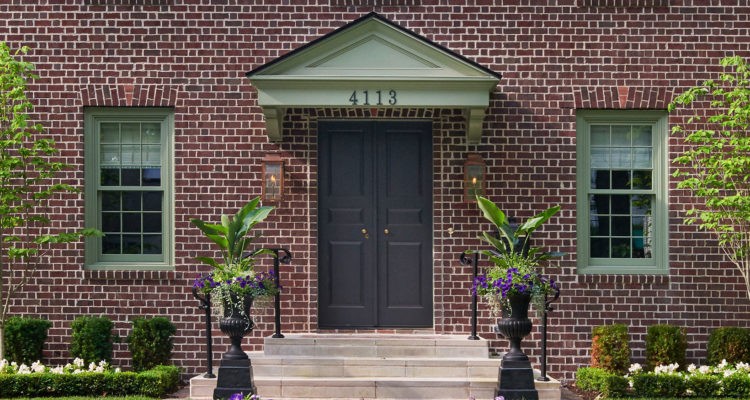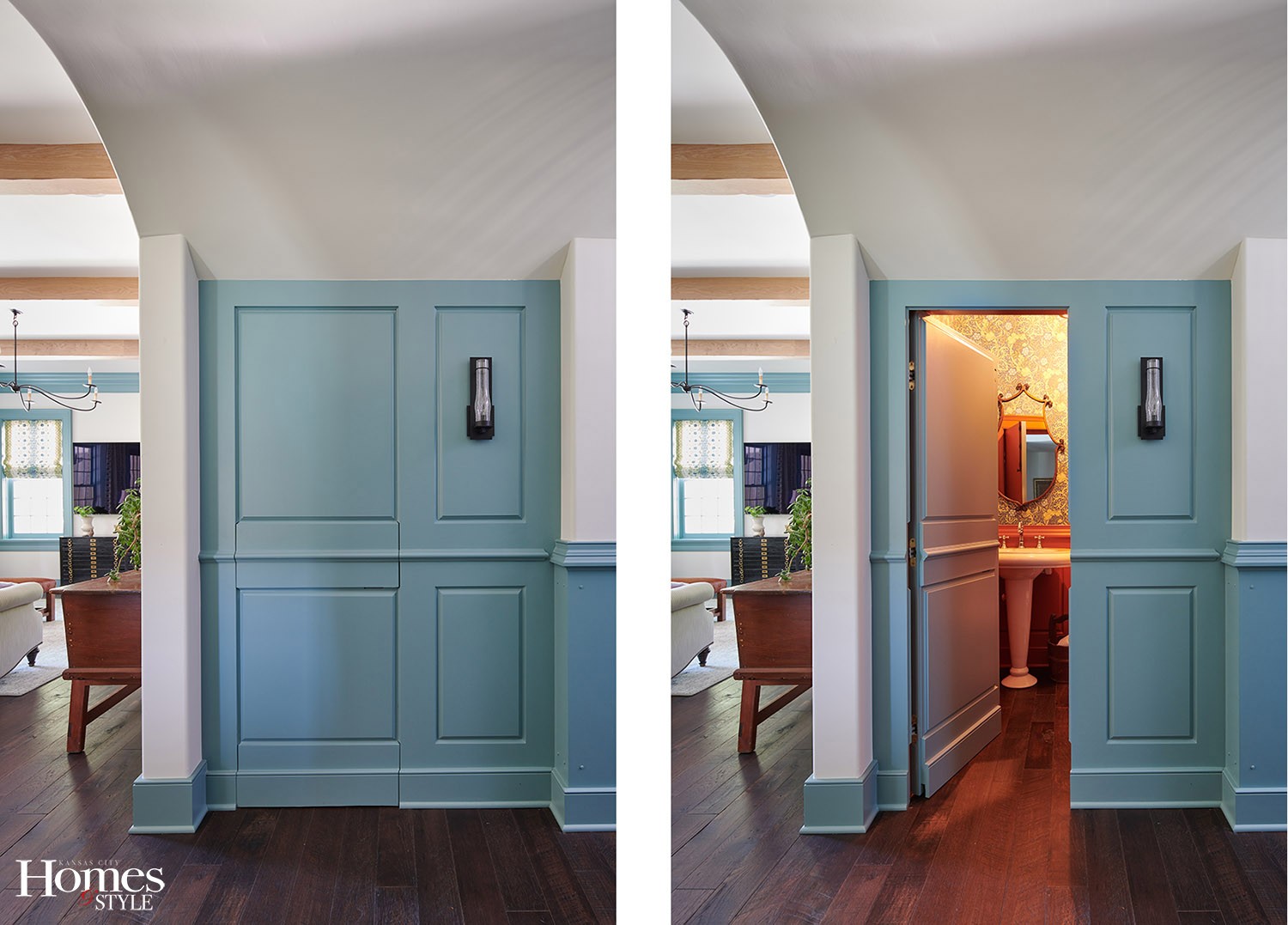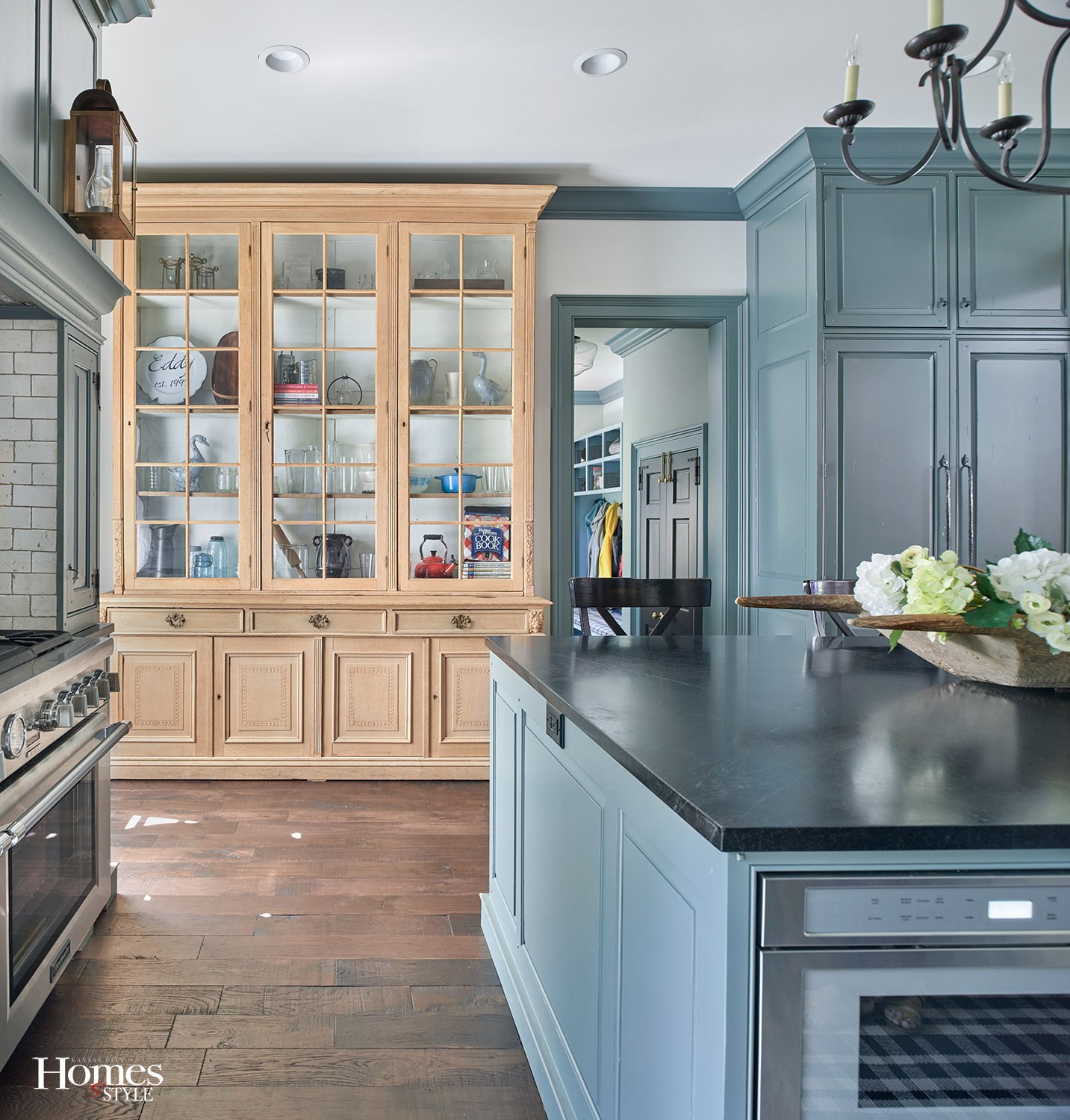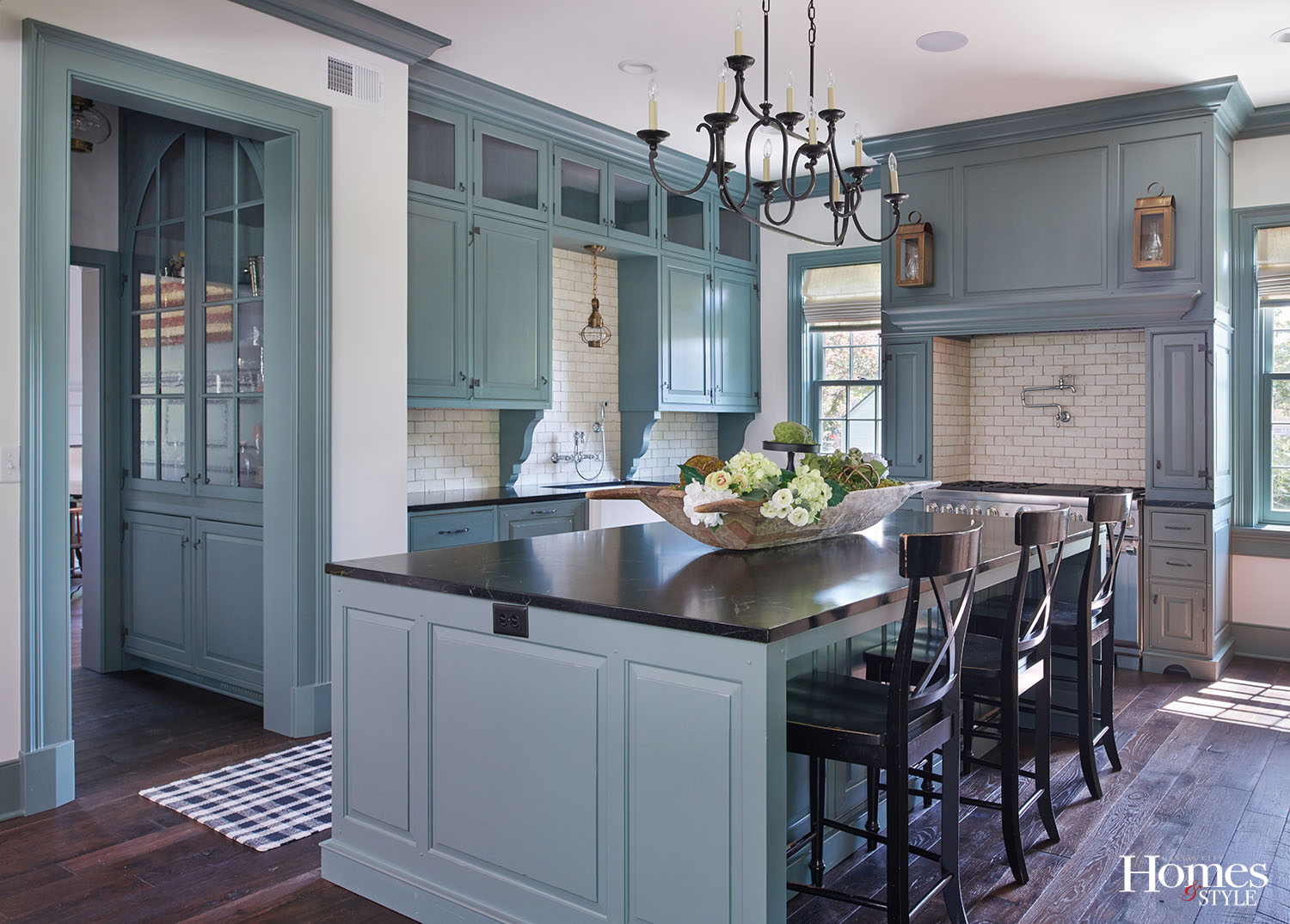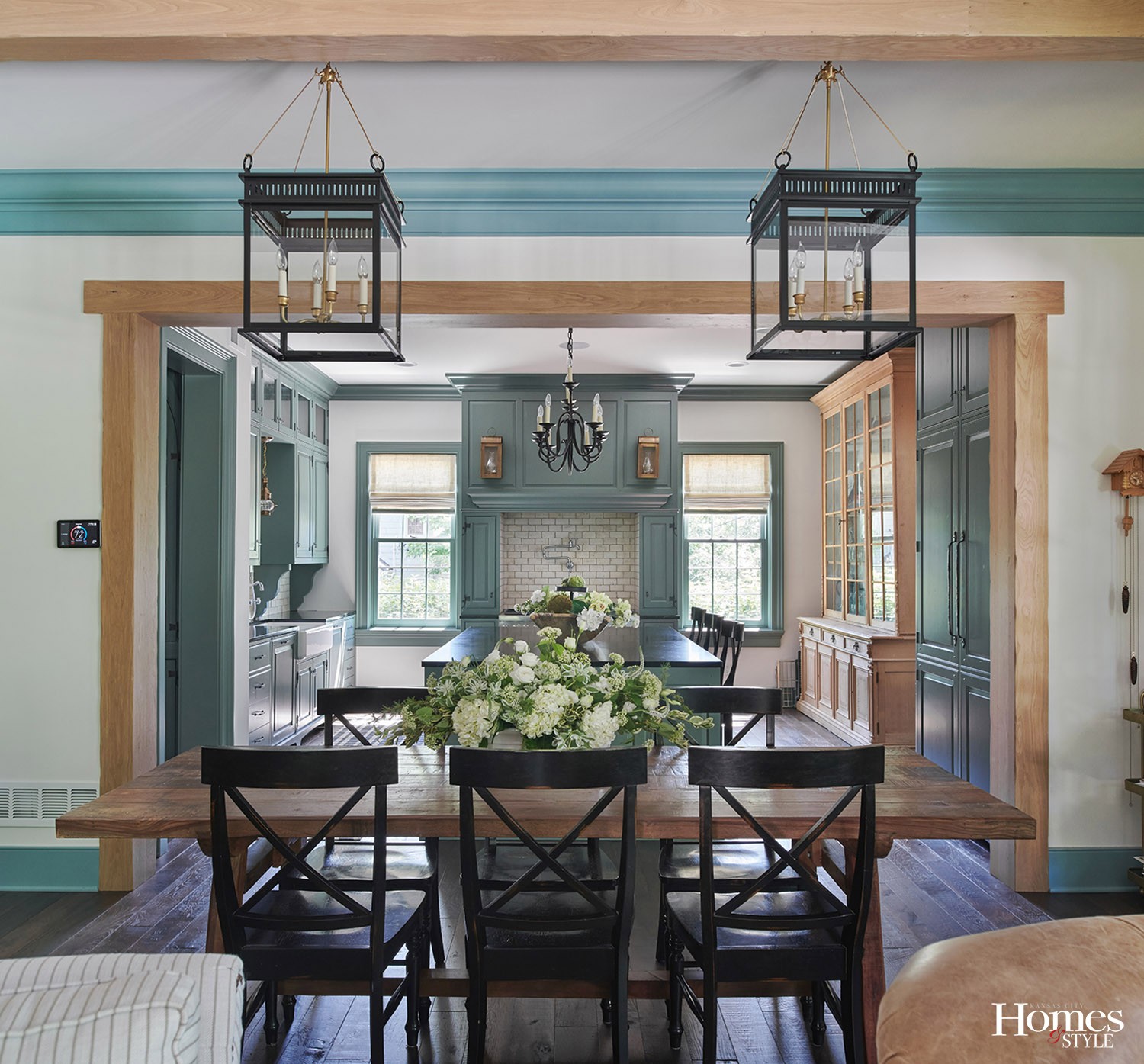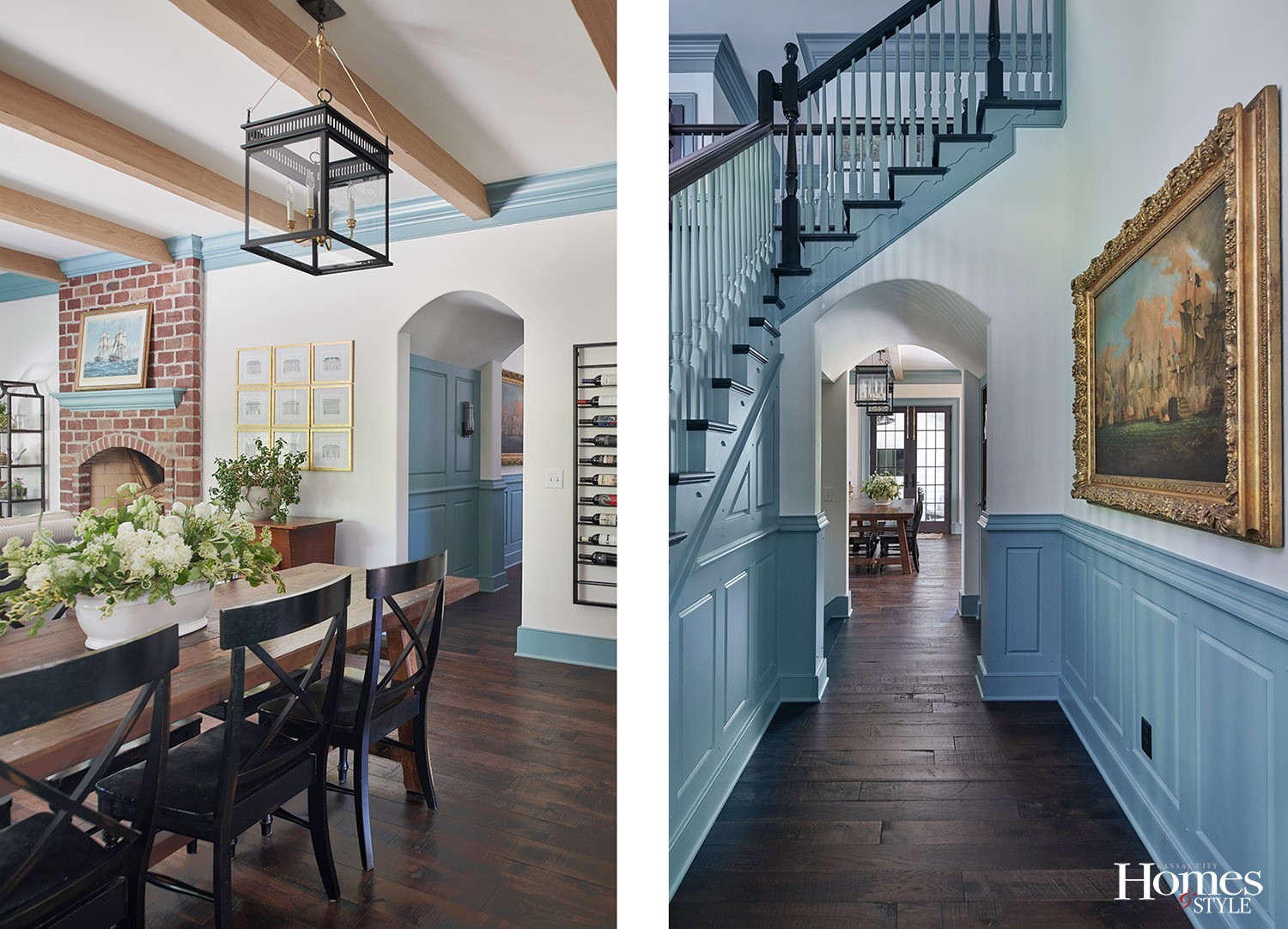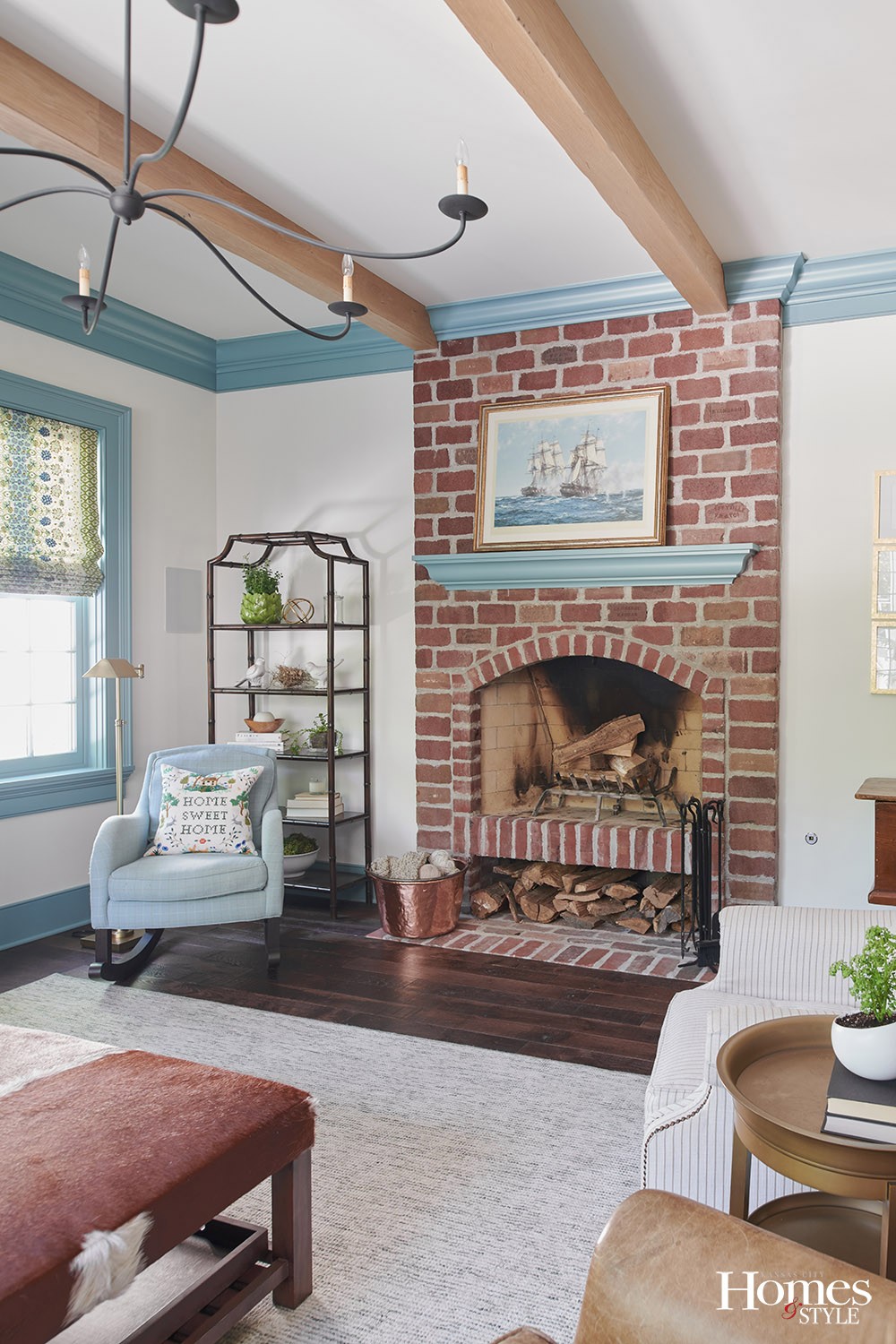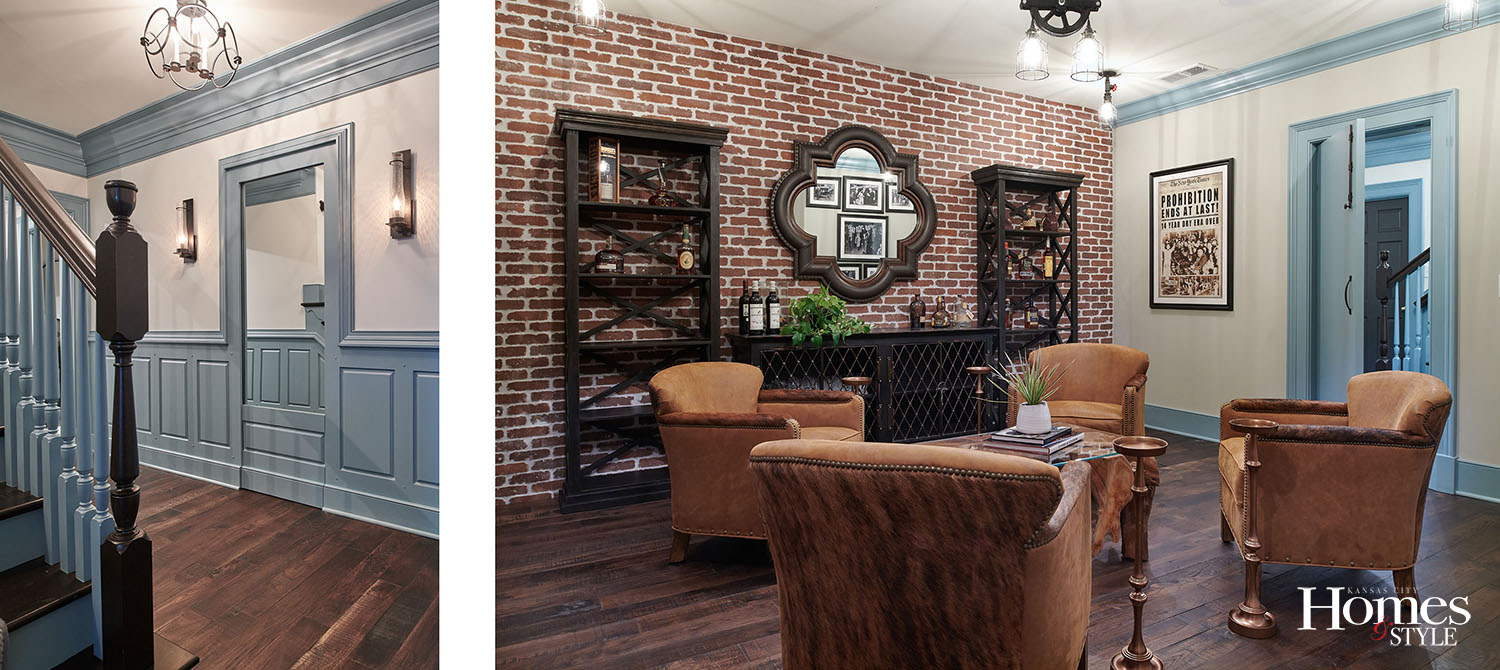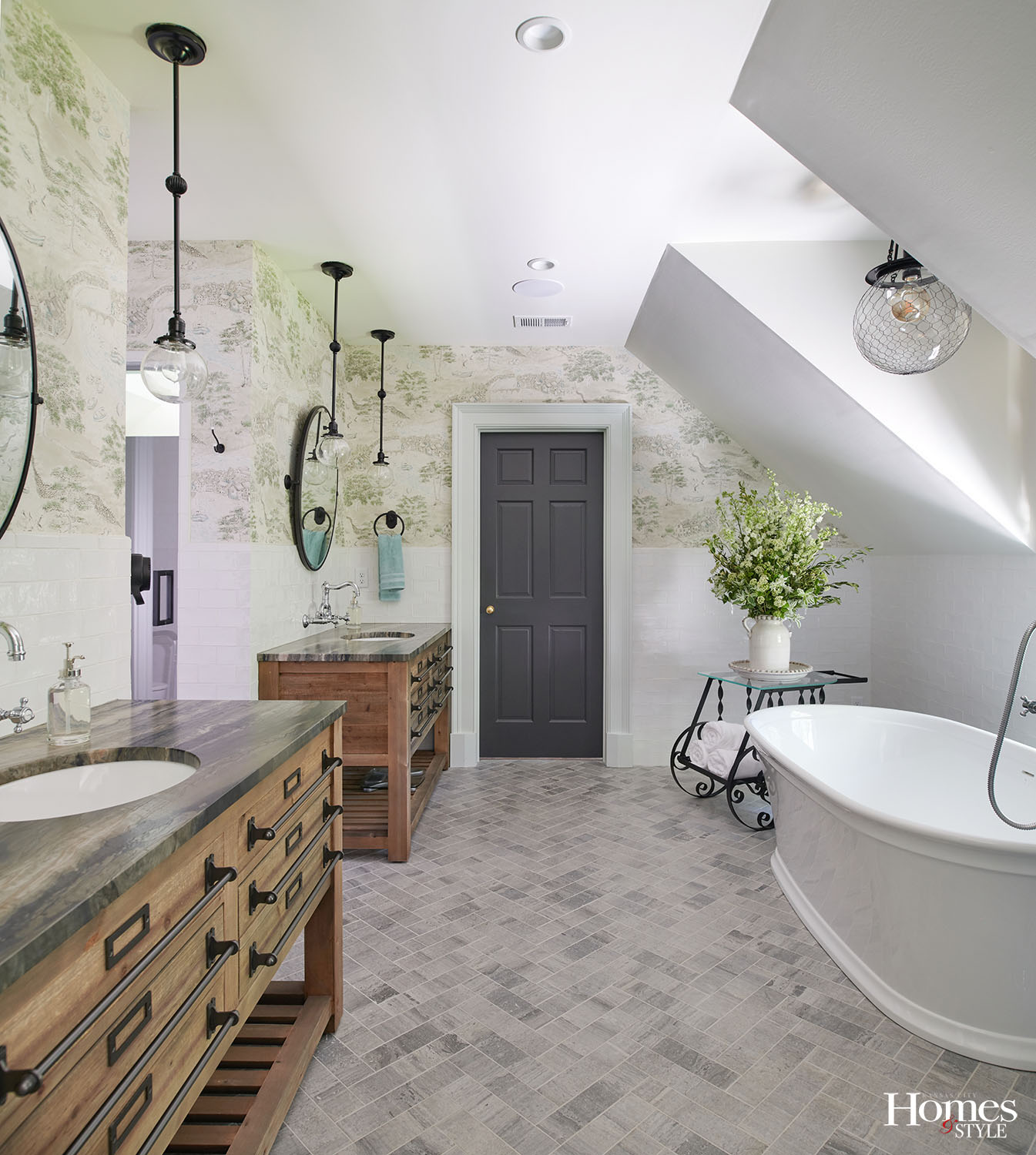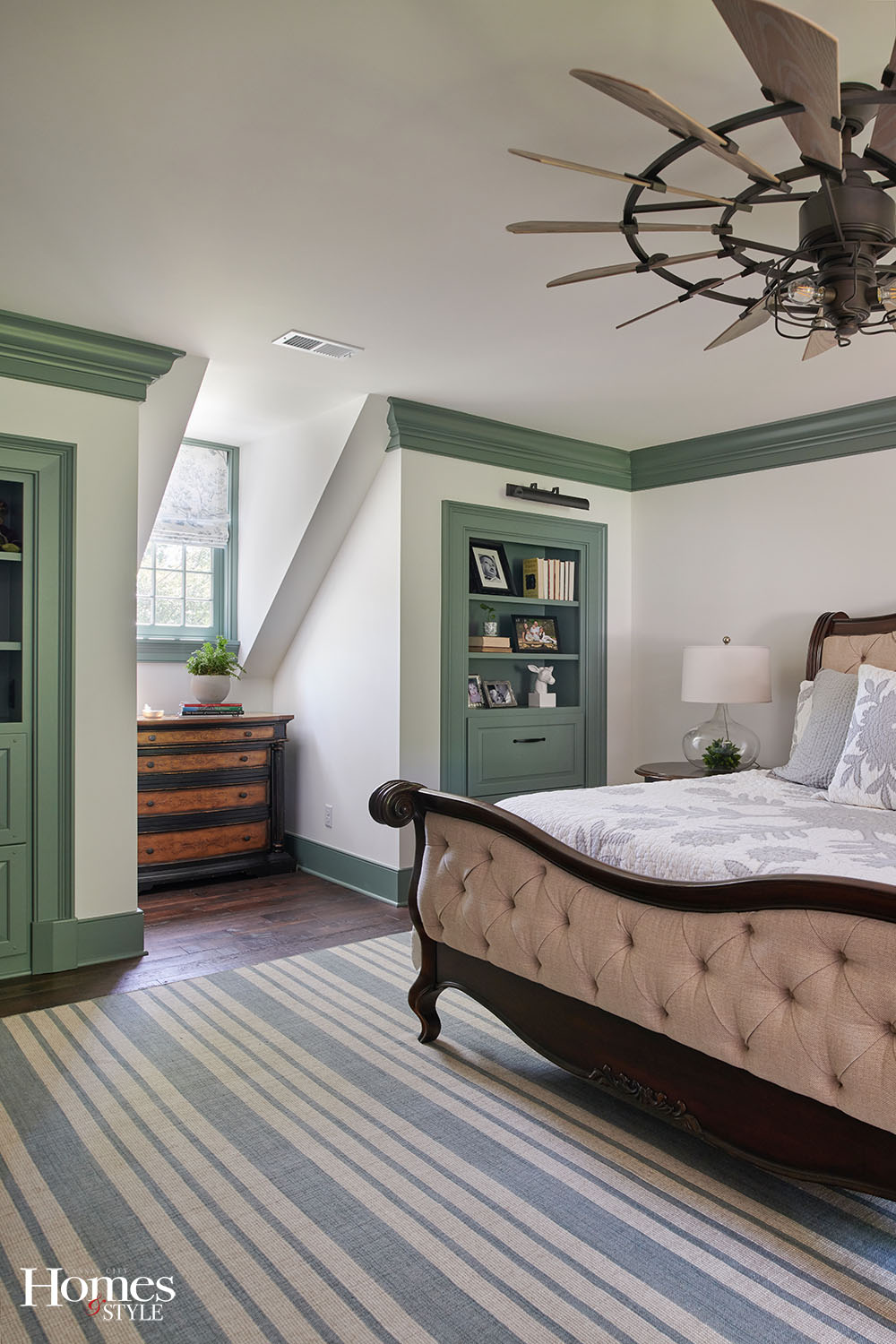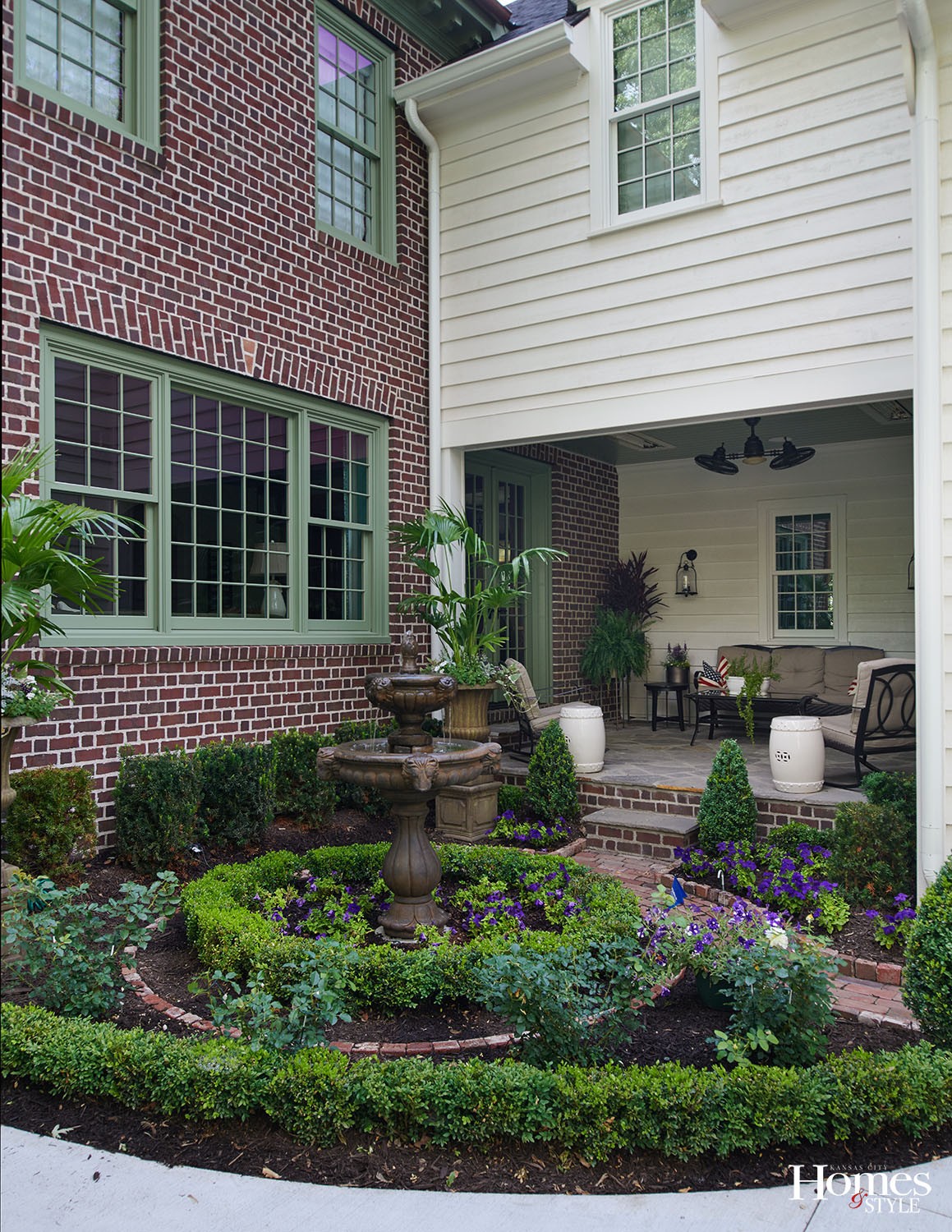A Prairie Village family finds presence in the past.
Story by Andrea Darr Gekas | Photos by Matt Kocourek
As a builder, Mark Eddy takes pride in basing his business doing unique work for clients — and himself. He loves digging into the details.
In Prairie Village and surrounding areas, his company Gahagan-Eddy, has rebuilt a number of custom houses that hone in on this aspect. But one project in particular has always stood out in his mind: the restoration of a reproduction Williamsburg-style home for which he researched materials that would have been used in 1800s construction.
As his three kids with his wife, Constance, grew into teenagers, they started thinking of creating a larger family home that could become generational. Mark’s thoughts returned to that Williamsburg and how he could customize it to fit perfectly on a 200-foot-deep lot he owned just a block away from their home in Prairie Village.
“I wanted to build something that was historically significant and architecturally accurate, not defined by current trends, and that nods to other houses in the neighborhood. Maybe in 100 years it will be nominated to be on a historic registry,” he says.
It was architecturally designed to mimic homes that evolved in Colonial times, with the front of the home constructed of brick and the rear of white cedar lap siding.
One detail Mark had to get right was the pattern of using halved bricks on the facade, replicating traditional Williamsburg homes. This pattern uses halved and full alternating bricks to create a style all its own.
“The kids and I spent countless hours cutting and stacking 6,000 halved bricks, hopefully not upsetting neighbors with the unpleasant noise that entailed,” he notes.
The accurately narrow path from the sidewalk to the front door uses original bricks from the deconstruction of the former house that retain their stamp from Kansas brick yards in which they were made.
A manicured yard is a prime feature of Williamsburg architecture, adds Landscape Designer Jeffrey Preuss, who collaborated with Mark from the beginning of the project.
“Everything is symmetrical, and there’s continuity all around the house,” Jeffrey explains.
He planted dogwoods, columnar sweet gums and ornamental crab trees near the house for height, and filled in the front beds with Annabelle hydrangeas and white begonias, keeping the palette simple. Colorful blooms are reserved for formal urns.
An iron-hinged swinging gate delineates where the re-used brick driveway transitions into concrete that leads to the rear garage. A row of yews surrounds the brick portion of the house, while a quaint herb and vegetable garden, featuring espalier fruit trees, lines the back wall.
Jeffrey used two visual axes for sight lines, including one from the backyard, where an outdoor fireplace and chess-ready patio covered by a pergola draws the family outdoors. The other visual focal point is a brick-paved courtyard off the side veranda, planted with fragrant roses and a bubbling lion-head fountain.
Interior Designer Dawn Bannigan continued the Williamsburg theme so everything flowed smoothly from the exterior to the interior.
“I’m from Charleston, so I’m extremely familiar with the style,” she says. “I’ve never done a project like this, but it was super fun.”
Her main goal was to stay true to the period, which can be defined by squareness, detailed woodwork, and color — generally grays, blues, greens and pops of red.
The paint palette came from Benjamin Moore’s Williamsburg historical collection, including the main trim color, Wythe Blue.
Dawn adored the research as much as Mark but redirected him in the lighting category, which has significantly improved in the last 150 years.
“He would have taken everything to the period, but the lighting we had to update a bit,” she says. Many fixtures were still made out of iron, though, and stylistically nodded to the past.
The truest replica of interior architecture can be found in the dining room. Mark and his company superintendent, Michael Conway, built raised panel wainscot with pegs to honor the tradition of mortise and tenon construction. For the crown molding, they handmade 167 dentil blocks to accentuate the ceiling. It took four months of evenings and weekends to complete the interior trim of the home.
Amid its history-filled walls, the table and chair set — stamped underneath with the year 1875 — is a favorite spot for the family to dine and play games.
Across the hall, the library beckons to Constance, a fantasy/science fiction writer. Shelves of books fill three walls of the room. At the center, her modern-day Mac book meets antiquity on a small-scale 1800s writing desk. A side door opens to a spiral staircase down to a Prohibition-themed speakeasy, with club chairs and lockers for friends to store liquor.
“We’ve only lived here a few months and we’ve been in a pandemic, so we haven’t had anybody over yet, but I think it will be great,” she says.
An exercise room, rec room and Mark’s office also comprise the lower level. It’s more relaxed and modern — with the occasional light saber, signed Empire Strikes Back poster and Hogwart’s wand — than the Americana antiques on the main level.
In the living room, for example, former butter churners now function as side tables, a dough box stores blankets and an apothecary table hides remotes beneath the hung flat-screen TV.
Constance says antiques are a natural fit with children.
“It’s actually easier because they’re already beat up over 150 years,” she comments.
The living room hearth (one of four true masonry fireplaces in the house) is one of Mark’s favorite parts. The family has burned a cord of wood since January. A modern rocking chair nearby is where Constance spent the winter knitting a sweater.
One of the very first purchases for the home, even before the foundation was poured, was an 1880 limed oak side board with lion-head details sourced from 1st Dibbs. The glass fronts open by key, and the ledge is complete with a real candle burn. It sets the tone for the kitchen by distinguishing itself from the painted cabinetry.
The rest of the kitchen’s details were heavily researched, including rat tail cabinet hinges and hand-forged iron pulls. Soapstone countertops and a farm house sink also harken back in time.
A true butler’s pantry to store away serve ware connects the kitchen to the dining room, while a functional rear entry catches coats and shoes before they can clutter up the house.
The floor plan remains open but has defined spaces. Several hidden doors in the home lead to “secret” spaces. While its historic essence is captured, its livability has been fast-forwarded to modern-day luxury.
At 6,000 square feet, with five bedrooms and seven bathrooms, everybody has their own space to get away, if they want, although most often everyone convenes, whether at the basement ping pong table or the teak tobacco table that conjoins the kitchen and hearth room.
“We wanted a house that’s loved and lived in, in every aspect,” Mark says.
It’s truly a house that bridges past, present and future, now and for the next 100-plus years.
Resources
- Builder/Contractor: Gahagan-Eddy
- Interior Designer: Dawn Bannigan Designs
- Project Designer: Gahagan-Eddy
- Architect: Elswood Smith Carlson Architects
- Appliances: Ferguson Bath, Kitchen & Lighting Gallery
- Audio / Video, Home Theater, Home Security: Longwire, LLC
- Countertops: Dimensional Stone
- Doors / Windows: Kansas City Millwork – Marvin Windows
- Electrician: CRH Electric
- Excavation: Downing Construction
- Fireplace & Masonry: Brotherton Masonry
- Flooring & Tile: KNK Tile
- Flooring Hardwood: Kenny’s Hardwood
- Florist: Monica Faught
- Foundation: JG Creten Basements
- Framing: Paul Hudson Construction
- Garage Doors: Royal Garage Door
- Glass & Mirrors: Top Line Glass Works
- Heating & Cooling: United Heating and Cooling
- Landscaping & Hardscaping: Jeffrey Preuss Landscapes
- Lumber: McCray Lumber
- Paint: Spectrum Paint
- Painter: First Impressions
- Planters: Adorned Planters
- Plumbing: Paul Vielhauer Plumbing
- Roofing: AJ Roofing
- Sprinkler System: ASAP Sprinklers
- Trim Work: Borger Construction
- Window Coverings: Budget Blinds

